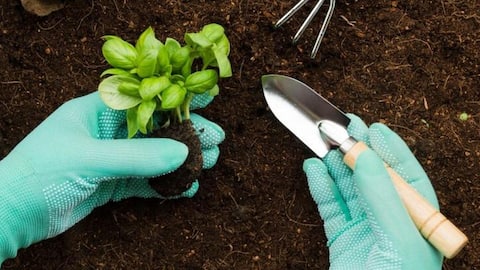Types of potting soils you can use for your plants
What's the story
Potting soil is a combination of various ingredients that come in handy to support plant growth.
It can be found in a variety of forms to meet the needs of different plants.
You can, of course, use different kinds of potting soil at different times to determine whether your plants are struggling to survive or flourishing.
Here are some of the most common ones.
Type 1
All-purpose potting soil
This potting soil works well for both indoor and outdoor container plants, and it is especially useful for repotting or growing new plants.
For optimal drainage, aeration, and water retention, a general mixture of compost, pine bark, perlite, and fertilizer is included.
The soil is still fluffier than outdoor soil but is somewhat heavier than indoor soil, all thanks to these ingredients.
Type 2
Garden potting soil
This kind of soil functions more as a soil conditioner than a growing medium. It can be added to lawns or used to improve gardens.
To improve soil structure and organic matter levels, it typically contains native soil, coarse sand, perlite, and clay soil.
Its drainage potential is lower, though, and it is heavier than raised bed soil.
Type 3
Raised bed soil
In an outdoor garden bed, raised bed soil works well for producing vegetables and other edibles.
The soil contains nutrient-rich materials like worm castings and compost, as well as slow-release fertilizers.
Additionally, it has bigger particles than regular potting soil to improve aeration and drainage.
This soil typically comprises an amalgamation of topsoil, compost, and organic matter.
Type 4
Indoor potting soil
As the name suggests, a potting soil that is designed specifically for indoor plants such as snake plants, philodendrons, or peace lilies, is called indoor potting soil.
It has components like biochar and sandy soil that aid in drainage and nutrient retention.
Moreover, bark, which can harbor common plant pests like fungus gnats, is typically absent in this mixture.
Type 5
Outdoor potting soil
A container plant placed outdoors, such as a marigold or hydrangea, features outdoor potting soil.
Topsoil, compost, peat moss, and worm castings are examples of materials that help retain moisture in this soil along with organic matter and fertilizer.
Furthermore, because it has to withstand weather conditions like wind and rain, this potting soil is heavier than the soil used indoors.
